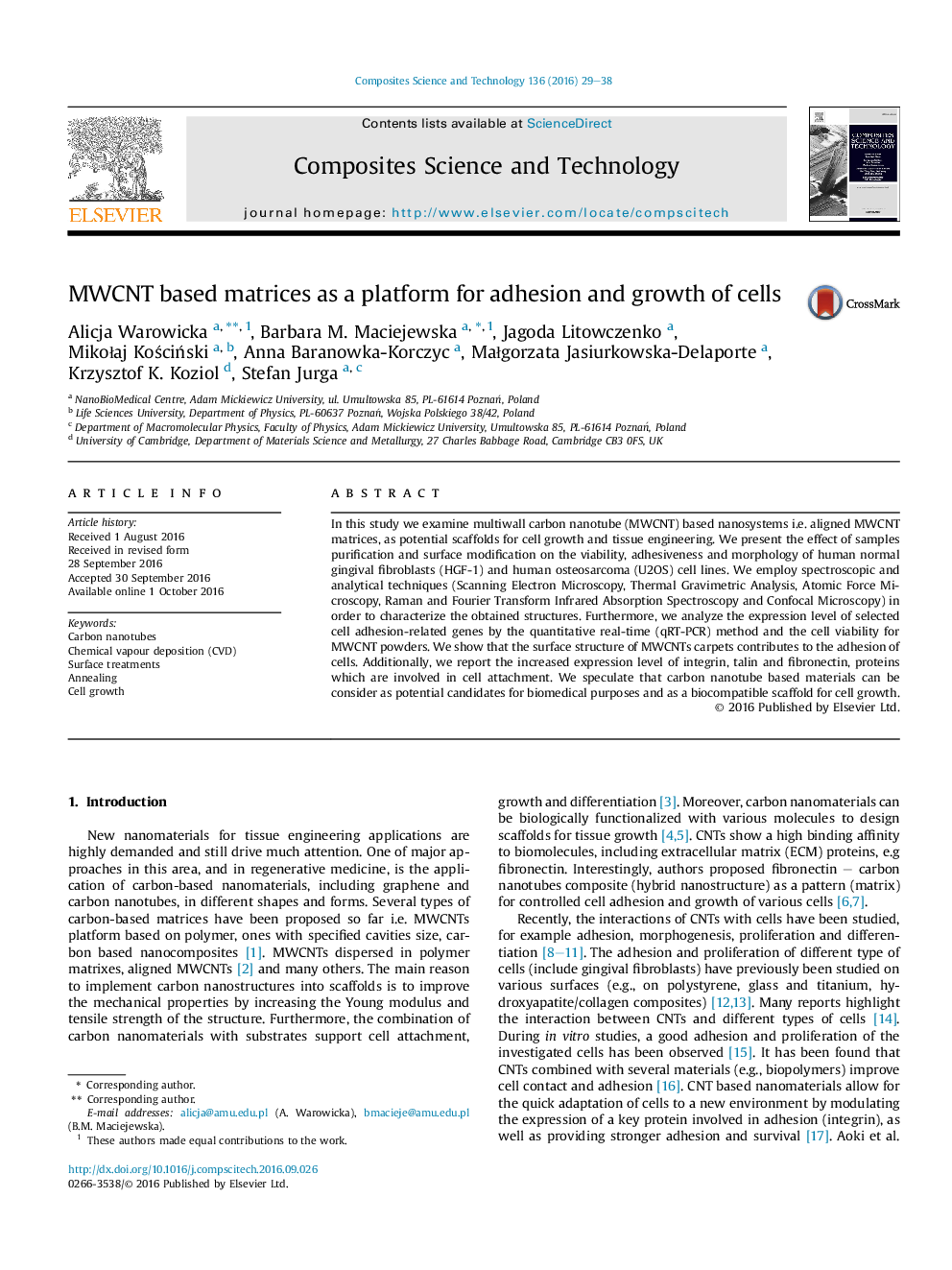| Article ID | Journal | Published Year | Pages | File Type |
|---|---|---|---|---|
| 5022411 | Composites Science and Technology | 2016 | 10 Pages |
Abstract
In this study we examine multiwall carbon nanotube (MWCNT) based nanosystems i.e. aligned MWCNT matrices, as potential scaffolds for cell growth and tissue engineering. We present the effect of samples purification and surface modification on the viability, adhesiveness and morphology of human normal gingival fibroblasts (HGF-1) and human osteosarcoma (U2OS) cell lines. We employ spectroscopic and analytical techniques (Scanning Electron Microscopy, Thermal Gravimetric Analysis, Atomic Force Microscopy, Raman and Fourier Transform Infrared Absorption Spectroscopy and Confocal Microscopy) in order to characterize the obtained structures. Furthermore, we analyze the expression level of selected cell adhesion-related genes by the quantitative real-time (qRT-PCR) method and the cell viability for MWCNT powders. We show that the surface structure of MWCNTs carpets contributes to the adhesion of cells. Additionally, we report the increased expression level of integrin, talin and fibronectin, proteins which are involved in cell attachment. We speculate that carbon nanotube based materials can be consider as potential candidates for biomedical purposes and as a biocompatible scaffold for cell growth.
Related Topics
Physical Sciences and Engineering
Engineering
Engineering (General)
Authors
Alicja Warowicka, Barbara M. Maciejewska, Jagoda Litowczenko, MikoÅaj KoÅciÅski, Anna Baranowka-Korczyc, MaÅgorzata Jasiurkowska-Delaporte, Krzysztof K. Koziol, Stefan Jurga,
